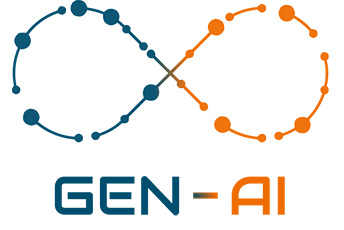Use Case: Infrastructure Project Auditing with Compliance Verification
Overview:
Auditing infrastructure projects is critical to ensure that proposals comply with local regulations and required quality standards. A generative semantic model that processes PDFs can automatically analyze infrastructure proposals, identifying key elements such as timelines, budgets, environmental impact, and alignment with local regulations, and generate clear summaries to facilitate review and decision-making.
How It Works:
- Upload Proposals in PDF:
Users upload infrastructure project proposals to the system, which can include contracts, technical studies, and impact assessments. - Document Processing:
- The model analyzes the text using natural language processing (NLP) to extract:
- Compliance: Verifies alignment with local regulations, such as building permits, safety standards, and sustainability measures.
- Timelines: Start dates, intermediate deadlines, and final project delivery dates.
- Budget: Total amount, cost breakdown, and resource allocation.
- Environmental Impact: Measures to minimize environmental impact and mitigation plans.
- The model analyzes the text using natural language processing (NLP) to extract:
- Risk and Omission Identification:
- Detects proposals that fail to mention key regulations or contain ambiguous information about permits and environmental compliance.
- Highlights inconsistencies between timelines, budgets, and legal requirements.
- Summary Generation:
- Provides a clear report that includes:
- Compliance and strengths of the proposal.
- Identified risks or areas that require adjustments.
- Recommendations to align the proposal with required regulations and standards.
- Provides a clear report that includes:
- Storage and Queries:
- The generated summaries are stored in vector databases, allowing for quick searches in future audits.
Practical Example:
Scenario:
A government agency needs to audit proposals for a road infrastructure project and ensure they comply with local regulations before awarding the contract.
Process with the Model:
- Document Upload:
- Five PDF proposals for the construction of a road section are uploaded to the system.
- Model Analysis:
- Proposal 1:
- Compliance: Includes references to local permits and road safety standards.
- Timeline: Estimated delivery in 18 months.
- Budget: $10,000,000, with detailed breakdown.
- Environmental Impact: Plan to mitigate CO₂ emissions during construction.
- Proposal 2:
- Compliance: Does not mention environmental permits.
- Timeline: Estimated delivery in 24 months, but lacks clear intermediate phases.
- Budget: $9,500,000, with incomplete details.
- Environmental Impact: No mitigation measures included.
- Proposal 1:
- Summary Generation:
- The model generates a report that includes:
- Proposal 1:
- Strengths: Compliance and well-defined timeline.
- Risks: None detected.
- Proposal 2:
- Strengths: Competitive budget.
- Risks: Lack of environmental permit references and mitigation measures.
- Recommendations:
- Proposal 1: Accept without modifications.
- Proposal 2: Request adjustments in permits and environmental plans before considering approval.
- Proposal 1:
- The model generates a report that includes:
- Report Output:
- The audit team receives a consolidated summary that makes it easy to compare the proposals and prioritize the most complete options that align with regulations.
Benefits of the Model in Infrastructure Project Auditing:
- Time Savings:
- Automates the review of extensive proposals, significantly reducing auditing time.
- Regulatory Compliance Verification:
- Accurately identifies whether proposals comply with local regulations and required standards.
- Clear Report Generation:
- Provides organized summaries that highlight key points, risks, and areas for improvement.
- Improved Decision-Making:
- Facilitates comparison of multiple proposals to choose the most viable and aligned with project goals.
- Efficient Organization and Queries:
- Stores processed documents for quick searches and future references during audits or renewals.
Additional Applications:
- Public Tender Audits:
- Verifies that proposals in tender processes meet technical, financial, and regulatory requirements.
- Project Management:
- Evaluates the feasibility of proposals in terms of timelines, budgets, and regulations before approval.
- Environmental Compliance:
- Ensures proposals include clear measures to mitigate environmental impact.
- Proposal Comparison:
- Identifies the most complete and competitive proposals among different bidders.
Practical Example:
Additional Scenario:
A private company evaluates proposals for building a solar park and needs to ensure that the options comply with environmental and electrical safety regulations.
Without the model:
- The audit team spends weeks reviewing each proposal, searching for references to regulations and risks.
With the model: - The system automatically analyzes the proposals, generating a summary that identifies regulatory alignment, critical omissions, and strengths within hours, instead of weeks.
Conclusion:
Automated auditing of infrastructure projects with summary generation ensures that proposals align with local regulations, minimizing risks and optimizing decision-making. This semantic model not only improves operational efficiency but also ensures decisions are based on clear and objective analysis. Ideal for public agencies, construction companies, and project managers seeking to ensure feasibility and regulatory compliance in their infrastructure initiatives.


